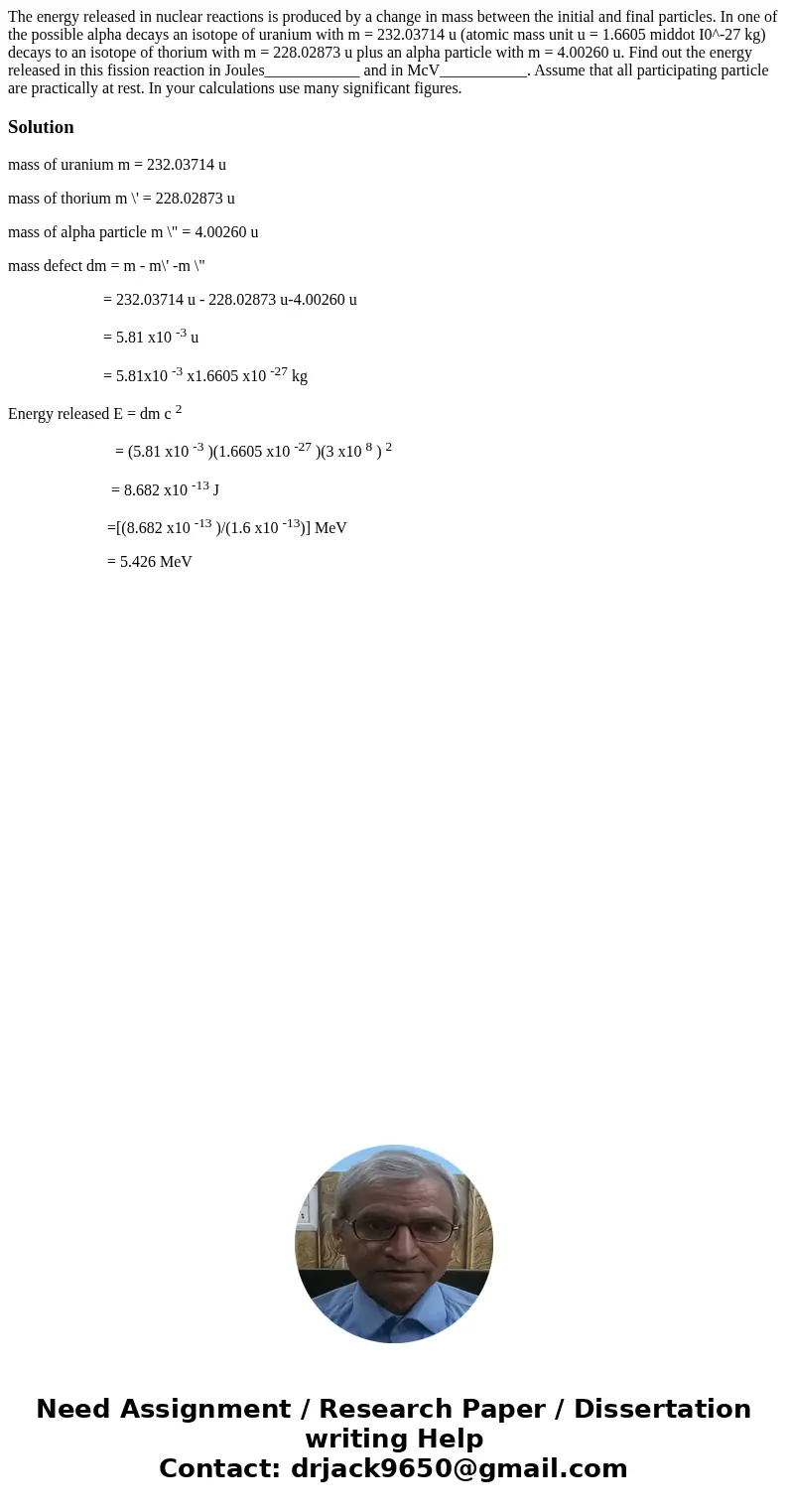The energy released in nuclear reactions is produced by a ch
The energy released in nuclear reactions is produced by a change in mass between the initial and final particles. In one of the possible alpha decays an isotope of uranium with m = 232.03714 u (atomic mass unit u = 1.6605 middot I0^-27 kg) decays to an isotope of thorium with m = 228.02873 u plus an alpha particle with m = 4.00260 u. Find out the energy released in this fission reaction in Joules____________ and in McV___________. Assume that all participating particle are practically at rest. In your calculations use many significant figures.
Solution
mass of uranium m = 232.03714 u
mass of thorium m \' = 228.02873 u
mass of alpha particle m \" = 4.00260 u
mass defect dm = m - m\' -m \"
= 232.03714 u - 228.02873 u-4.00260 u
= 5.81 x10 -3 u
= 5.81x10 -3 x1.6605 x10 -27 kg
Energy released E = dm c 2
= (5.81 x10 -3 )(1.6605 x10 -27 )(3 x10 8 ) 2
= 8.682 x10 -13 J
=[(8.682 x10 -13 )/(1.6 x10 -13)] MeV
= 5.426 MeV

 Homework Sourse
Homework Sourse